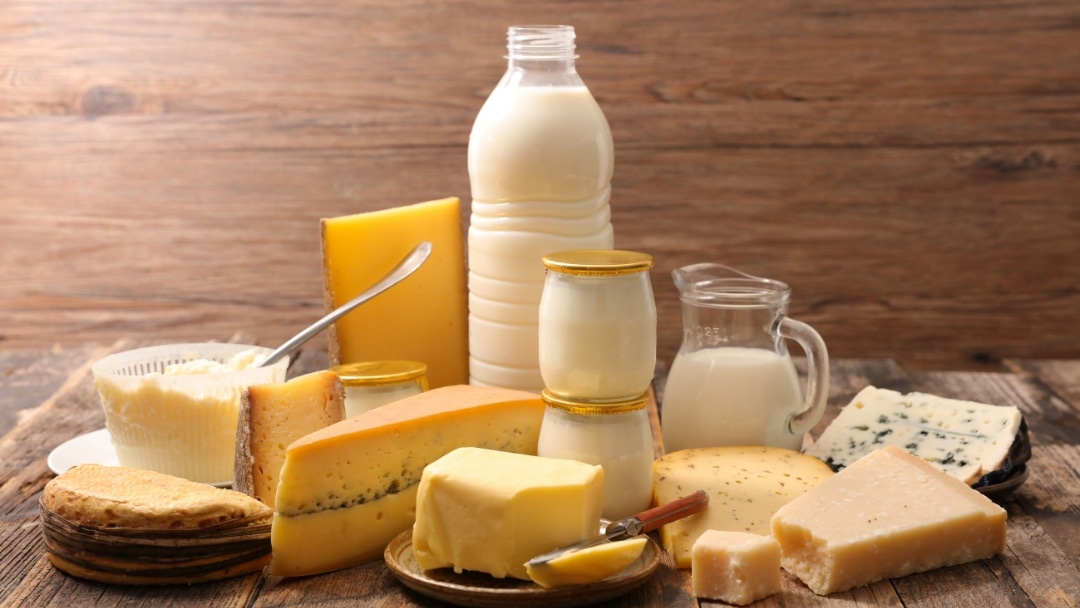In this blog post, Patricia S. Lemer walks us through the history of the gluten-free, casein-free diet and how to get the best results from it.
Are you on “the diet”? is a query commonly heard wherever I go. At my weight-loss clinic “the diet” is the protein shake that allowed me to drop 25 pounds. At the health club, “the diet” could mean The Zone, Atkins or Eat Right for your Type. Friends have used these programs to drop poundage and feel better.
Most people have heard of the Feingold diet, a program that eliminates artificial colors flavors, preservatives and salicylates. It has helped many children overcome difficult behaviors. In neurodevelopmental circles, however, the that probably works best is a gluten-free, casein-free diet. I find it one of the simplest, most exciting discoveries in my over 40 years in this field.
History of the Gluten-Free Casein-Free Diet
Originally, Lisa Lewis dug into diet literature looking for a way to help her son. She located the research of Paul Shattock and Karl Reichelt, who link gluten and casein with autism spectrum disorders. In 1998, she wrote Special Diets for Special Kids, sharing her findings with other families. Later she co-founded the Autism Network for Dietary Intervention (ANDI) with Karen Seroussi, who popularized “the diet” further in her book, Unraveling the Mystery of Autism and Pervasive Developmental Disorder: A Mother’s Story of Research & Recovery. These two courageous women have changed the lives of many families.
Others have joined their bandwagon. More and more companies now produce time-saving, quality, gluten-, dairy-, soy- and yeast-free products. Gluten-free products are available from Whole Foods, Trader Joe’s and increasingly in mainstream stores and restaurants.
How to Get Best Results from the Gluten-Free Casein-Free Diet
Whatever “the diet”, here are some ways to assure best results with the least amount of distress:
Switch to Additive-Free, Real Foods
Eliminate junk. Because strawberries are available all year round, most of today’s kids don’t have the experience of eating a just-picked local, organically grown berry in May. What a shame! Shop at stores like Trader Joe’s and Whole Foods that specialize in wholesome products.
Eat a Varied Diet
Menus that reflect the seasons provide natural variety. If you serve corn cereal for breakfast, use a rice product for dinner. Rotate seed and nut butters for extra calcium. Vary cooking methods according to season, using long-cooked foods in the winter and raw or steamed foods in the summer. Watch those fats, including good ones such as olive and flaxseed oils. Eliminate hydrogenated fats and vegetable oils.
Eat Better, Exercise More
Today’s kids are chubby because they are eating empty calories, playing video games instead of hopscotch, and riding school buses instead of their bikes.
Put the Whole Family on “The Diet”
Everyone’s health will improve. Children with autism frequently have siblings with similar issues to a lesser degree. ADHD, learning disabilities and perceptual issues could dissipate. So could adult arthritis, mental and physical fatigue, asthma and allergies.
Find out Individual Needs Through Elimination or Laboratory Testing
Some call food sensitivities allergies, while others say a true allergy requires a reaction such as hives. Nutritionist and Developmental Delay Resources co-founder Kelly Dorfman believes that the best and least expensive test for food reactions is elimination of that food followed by a challenge. If that process overwhelms you, and if your pocketbook can withstand the cost, have your physician order laboratory tests. A wide variety of reliable tests, including organic acid tests for yeast problems and urinary peptide testing for gluten and casein sensitivities, is available from Great Plains Laboratory.
Learn to Cook Again
Share the kitchen with your children, who are more apt to experiment with new foods if they are involved in making them. Cooking is also a great way to gain fine motor control and to learn some math, physics and chemistry.
Use New Natural Sources of Vitamins and Minerals
Try sea vegetables. Ever eat sushi? That black wrapper is nori, a seaweed rich in minerals. You can buy it in sheets or flakes. It is salty and adds flavor to popcorn, soups and any foods. Dulse, another seaweed, is the world’s highest source of iron.
Be Open and Flexible
If a child ingests a little gluten or a muffin made with milk, don’t panic. Most children will not go into anaphylaxis. The constant assault of problematic foods causes illness, not a single serving.
About Patricia S. Lemer LPC MEd
Patricia S. Lemer is a licensed professional counselor, holding a Masters of Education in counseling and learning disabilities from Boston College and a Masters in Business from Johns Hopkins University. She practiced as an educational diagnostician for over 40 years.
She was a co-founder and served as Executive Director of the international non-profit organization Developmental Delay Resources (DDR). After DDR merged with Epidemic Answers, she became Chairman of the Board. When she retired from the board, she became an emeritus board member.

She is the author of three books, the most recent of which is Outsmarting Autism, Updated and Expanded: Build Healthy Foundations for Communication, Socialization, and Behavior at All Ages (North Atlantic Books, 2019).
Lemer wrote over 50 editorials for "New Developments," the quarterly newsletter of Developmental Delay Resources (DDR), from 1995 - 2009. When DDR wound down, she wrote an online blog, "After the Diagnosis, Then What?" from 2009-2017. Her articles and blogs have been updated and archived on the Epidemic Answers website.
Since 2019, Patricia Lemer has recorded a bimonthly podcast, "The Autism Detective." In these hour-long shows, she interviews parents and professionals about their experiences in maximizing the potential of individuals on the autism spectrum. Over 100 episodes are available on Spotify and other online platforms. To learn more, go to PatriciaLemer.com and OutsmartingAutism.com
Still Looking for Answers?
Visit the Epidemic Answers Practitioner Directory to find a practitioner near you.
Join us inside our online membership community for parents, Healing Together, where you’ll find even more healing resources, expert guidance, and a community to support you every step of your child’s healing journey.
Sources & References
Adams, J.B., et al. Comprehensive Nutritional and Dietary Intervention for Autism Spectrum Disorder-A Randomized, Controlled 12-Month Trial. Nutrients. 2018 Mar 17;10(3).
Cekici, H., et al. Current Nutritional Approaches in Managing Autism Spectrum Disorder: A Review. Nutr. Neurosci. 2019;22:145–155.
El-Rashidy, O., et al. Ketogenic Diet versus Gluten Free Casein Free Diet in Autistic Children: A Case-Control Study. Metab. Brain Dis. 2017;32:1935–1941.
Epstein, S.S. Unlabeled milk from cows treated with biosynthetic growth hormones: a case of regulatory abdication. Int J Health Serv. 1996;26(1):173-85.
Ghalichi, F., et al. Effect of Gluten Free Diet on Gastrointestinal and Behavioral Indices for Children with Autism Spectrum Disorders: A Randomized Clinical Trial. World J. Pediatr. 2016;12:436–442.
Hadjivassiliou, M., et al. Gluten sensitivity: from gut to brain. Lancet Neurol. 2010 Mar;9(3):318-30.
Hartman, R.E., et al. Dietary Approaches to the Management of Autism Spectrum Disorders. Adv. Neurobiol. 2020;24:547–571.
Herbert, M.R., et al. Autism and Dietary Therapy: Case Report and Review of the Literature. J. Child. Neurol. 2013;28:975–982.
Hsu, C.-L., et al. The Effects of a Gluten and Casein-Free Diet in Children with Autism: A Case Report. Chang Gung Med. J. 2009;32:459–465.
Julian, T., et al. Gluten sensitivity and epilepsy: a systematic review. J Neurol. 2018 Aug 23.
Juntti, H., et al. Cow’s milk allergy is associated with recurrent otitis media during childhood. Acta Otolaryngol. 1999;119:867–873.
Karakula-Juchnowicz, H., et al. The Food-Specific Serum IgG Reactivity in Major Depressive Disorder Patients, Irritable Bowel Syndrome Patients and Healthy Controls. Nutrients. 2018 Apr 28;10(5). pii: E548.
Karakula-Juchnowicz, H., et al. The role of IgG hypersensitivity in the pathogenesis and therapy of depressive disorders. Nutr Neurosci. 2017 Feb;20(2):110-118.
Knivsberg, A.M., et al. A Randomised, Controlled Study of Dietary Intervention in Autistic Syndromes. Nutr. Neurosci. 2002;5:251–261.
Lee, R.W.Y., et al. A Modified Ketogenic Gluten-Free Diet with MCT Improves Behavior in Children with Autism Spectrum Disorder. Physiol. Behav. 2018;188:205–211.
Lionetti, E., et al. Gluten Psychosis: Confirmation of a New Clinical Entity. Nutrients. 2015 Jul 8;7(7):5532-9.
Marí-Bauset, S., et al. Nutritional Impact of a Gluten-Free Casein-Free Diet in Children with Autism Spectrum Disorder. J. Autism Dev. Disord. 2016;46:673–684.
Martin, V.T., et al. Diet and Headache: Part 1. Headache. 2016 Oct;56(9):1543-1552.
Matthews, J.S., et al. Ratings of the Effectiveness of 13 Therapeutic Diets for Autism Spectrum Disorder: Results of a National Survey. J Pers Med. 2023 Sep 29;13(10):1448.
Nsouli, T.M., et al. The role of food allergy in serious otitis media. Ann Allergy. 1994 Sep; 66:91.
Pelsser, L.M., et al. Effects of a restricted elimination diet on the behaviour of children with attention-deficit hyperactivity disorder (INCA study): a randomised controlled trial. Lancet. 2011 Feb 5;377(9764):494-503.
Piwowarczyk, A., et al. Gluten-Free Diet in Children with Autism Spectrum Disorders: A Randomized, Controlled, Single-Blinded Trial. J. Autism Dev. Disord. 2020;50:482–490.
Quan, L., et al. A Systematic Review and Meta-Analysis of the Benefits of a Gluten-Free Diet and/or Casein-Free Diet for Children with Autism Spectrum Disorder. Nutr. Rev. 2022;80:1237–1246.
Ramakrishnan, J.B.. The role of food allergy in otolaryngology disorders. Curr Opin Otolaryngol Head Neck Surg. 2010;18:195–199.
Rizwan, M.Z., et al. Dietary wheat gluten induces astro- and microgliosis in the hypothalamus of male mice. J Neuroendocrinol. 2023 Jul 17;e13326.
Shakoor, Z., et al. Prevalence of IgG-mediated food intolerance among patients with allergic symptoms. Ann Saudi Med. 2016 Nov-Dec;36(6):386-390.
Sloper, K.S., et al. Children with atopic eczema. II: Immunological findings associated with dietary manipulations. Q J Med. 1991 Aug;80(292):695-705.
Stockton, S., et al. The Impact of a Food Elimination Diet on Collegiate Athletes’ 300-meter Run Time and Concentration. Glob Adv Health Med. 2014 Nov;3(6):25-40.
Verena, L., et al. Elimination diets’ efficacy and mechanisms in attention deficit hyperactivity disorder and autism spectrum disorder. Eur Child Adolesc Psychiatry. 2017; 26(9): 1067–1079.
Virdee, K., et al. Food-specific IgG Antibody-guided Elimination Diets Followed by Resolution of Asthma Symptoms and Reduction in Pharmacological Interventions in Two Patients: A Case Report. Glob Adv Health Med. 2015 Jan;4(1):62-6.
Whiteley, P., et al. The ScanBrit Randomised, Controlled, Single-Blind Study of a Gluten- and Casein-Free Dietary Intervention for Children with Autism Spectrum Disorders. Nutr. Neurosci. 2010;13:87–100.
Xie, Y., et al. Effects of Diet Based on IgG Elimination Combined with Probiotics on Migraine Plus Irritable Bowel Syndrome. Pain Res Manag. 2019 Aug 21;2019:7890461.
Yu, Y., et al. Efficacy and Safety of Diet Therapies in Children With Autism Spectrum Disorder: A Systematic Literature Review and Meta-Analysis. Front. Neurol. 2022;13:844117.
Resources
Lewis, Lisa. Special Diets for Special Kids: Updated Gluten-Free, Casein-Free Recipes You’ll Love. Future Horizons, 2023.
Seroussi, Karen. Unraveling the Mystery of Autism and Pervasive Developmental Disorder: A Mother’s Story of Research & Recovery. Harmony, 2002.




